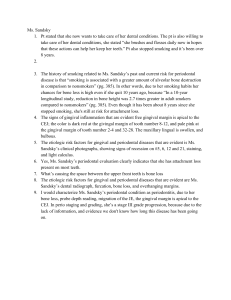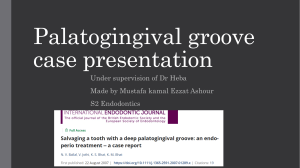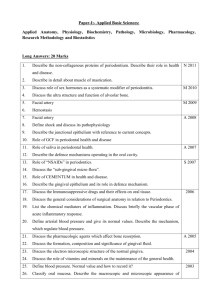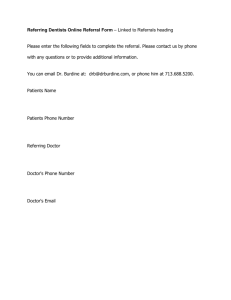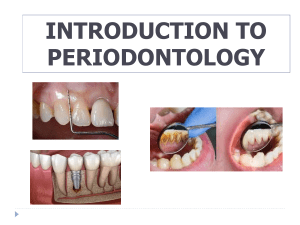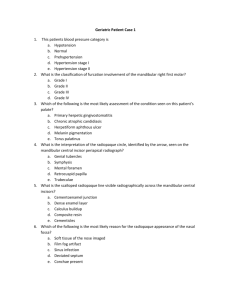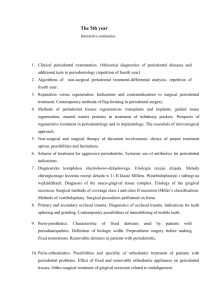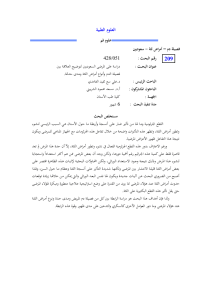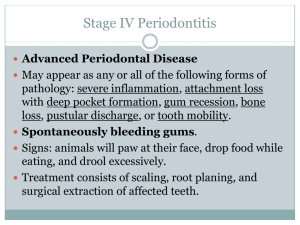Dental Anatomy: Periodontal Health Answer Key
advertisement
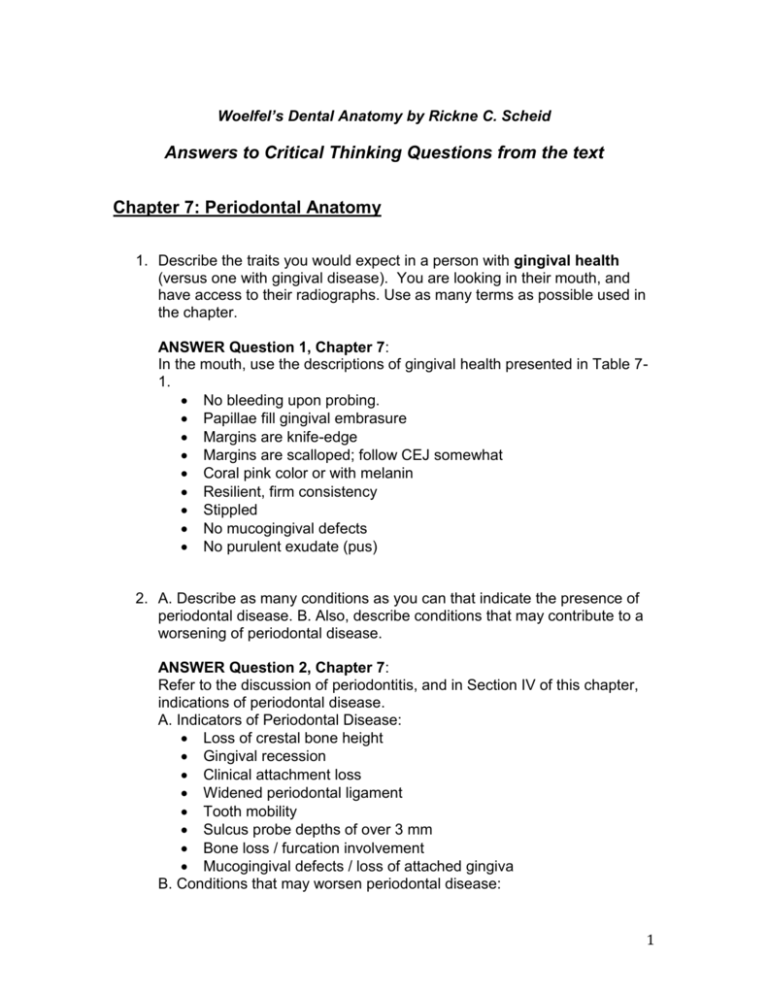
Woelfel’s Dental Anatomy by Rickne C. Scheid Answers to Critical Thinking Questions from the text Chapter 7: Periodontal Anatomy 1. Describe the traits you would expect in a person with gingival health (versus one with gingival disease). You are looking in their mouth, and have access to their radiographs. Use as many terms as possible used in the chapter. ANSWER Question 1, Chapter 7: In the mouth, use the descriptions of gingival health presented in Table 71. No bleeding upon probing. Papillae fill gingival embrasure Margins are knife-edge Margins are scalloped; follow CEJ somewhat Coral pink color or with melanin Resilient, firm consistency Stippled No mucogingival defects No purulent exudate (pus) 2. A. Describe as many conditions as you can that indicate the presence of periodontal disease. B. Also, describe conditions that may contribute to a worsening of periodontal disease. ANSWER Question 2, Chapter 7: Refer to the discussion of periodontitis, and in Section IV of this chapter, indications of periodontal disease. A. Indicators of Periodontal Disease: Loss of crestal bone height Gingival recession Clinical attachment loss Widened periodontal ligament Tooth mobility Sulcus probe depths of over 3 mm Bone loss / furcation involvement Mucogingival defects / loss of attached gingiva B. Conditions that may worsen periodontal disease: 1 Build up and failure to remove deposits of bacterial laden plaque and calculus over a relatively long period of time Enamel pearls or enamel extensions near the furcation Tooth crowding (difficulty cleaning) Heavy occlusion Poorly contoured restorations; open tooth contacts Restorations that impinge too close to junctional epithelium Teeth with short roots supporting false teeth Palatal grooves 2
